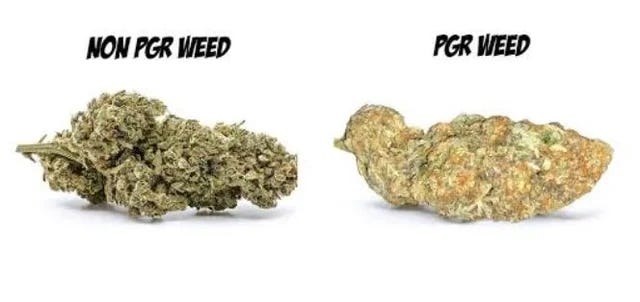What Are PGRs in Weed—And Should You Be Worried?
Why That "Perfect" Bud Might Be Too Good to Be True
Let’s get real: not all cannabis is created equal. Sometimes, those dense, shiny buds that look like top-shelf gold are actually hiding a dirty secret—chemical shortcuts. One of the biggest culprits? Synthetic plant growth regulators, or PGRs.
If you’ve ever picked up flower that looked fantastic but left you coughing, dizzy, or feeling nothing at all, you’re not imagining things. In this guide, we’re breaking down what PGRs really are, the difference between natural and synthetic types, how to spot PGR-laced weed, and how to shop smarter—especially if you’re using cannabis for wellness.
What Are PGRs, Anyway?
Plant Growth Regulators (PGRs) are compounds that influence how a plant grows—its shape, size, and how fast it matures. Some PGRs are naturally found in kelp, alfalfa, or even coconut water. Others are cooked up in labs and added to cannabis for one reason: profit.
In cannabis cultivation, growers may use PGRs to:
Make buds look denser and heavier
Control plant shape or height
Speed up flowering cycles
The issue? Not all PGRs are created equal. Some are safe. Others are banned in food crops because of serious health risks.
Natural vs. Synthetic PGRs: A Big Difference
Natural PGRs are actually a gift from Mother Nature. They’re common in organic growing and help boost resilience, strengthen roots, and improve bud structure—without compromising quality or safety.
But synthetic PGRs like paclobutrazol or daminozide? Those are a different story. They’re banned in many legal markets because they’ve been linked to:
Toxicity
Respiratory irritation
Reduced cannabinoid and terpene production
In other words, they can make your cannabis look better—but feel worse.
Why Do Some Growers Still Use Synthetic PGRs?
One word: money.
Synthetic PGRs bulk up the buds, reduce the space between them (called internodal spacing), and make flower appear more compact. This means growers can sell more by weight—even if the quality’s not there.
To the untrained eye, it might look like high-end weed. But when you smoke it, it can feel dull, harsh, or just plain ineffective.
How to Spot PGR-Treated Cannabis
Here’s what to look out for:
Rock-hard buds that feel unusually heavy
Lack of trichomes (the frosty crystals that carry THC and terpenes)
Weak aroma or a strange, chemical smell
Dark red or brown hairs that look dry or overcooked
A high that feels flat, sleepy, or just off
Your body knows. If something feels wrong, trust your gut—and your lungs.
Natural PGRs (Like Kelp) Are the Safe Bet
Kelp is a standout natural PGR source. It’s rich in plant hormones that support healthy root development and terpene production—everything you want in a wellness-friendly flower.
Most sun-grown or organic farms use kelp or alfalfa-based nutrients to boost plant health naturally. You can taste the difference: smoother smoke, richer aroma, and effects that actually feel right.
Are Legal Brands Using Synthetic PGRs?
Here’s the tricky part: PGRs aren’t always tested in legal markets.
That means even some legal products—especially cheap flower or mystery pre-rolls—can sneak through with synthetic PGRs. No major brands have been publicly exposed yet, but with no mandatory testing for these chemicals, the risk is real.
Bottom line? If it’s suspiciously cheap, smells weak, or hits harsh, ask questions.
Want to Track What Actually Works for You?
Cannabis isn’t one-size-fits-all. What relaxes one person might make another feel foggy or wired. That’s why we built a free Cannabis Wellness Tracker—a simple tool to help you remember what strains and products actually help you sleep, ease pain, or just feel like yourself. Subscribe to get instant access to your free tracker—and start making cannabis work for you.
Final Thoughts: Know What You’re Smoking
Synthetic PGRs are one of the cannabis industry’s quieter risks—but they matter. Especially for those of us using cannabis for sleep, pain relief, or anxiety, quality matters more than ever.
The good news? With a little knowledge and a sharp eye, it’s easy to sidestep the junk and choose cannabis that truly supports your health.
If my work’s helped you, consider supporting it here—no pressure, just gratitude.
Want personalized cannabis guidance? I offer 1:1 support through Savvy Relief.
Disclaimer: The information provided on this blog is for educational purposes only and is not a substitute for professional medical advice. Always consult your healthcare provider before starting or changing any treatments, including cannabis use.





The only way to know what you are using is clean. Learn to grow your own. It's a plant. To everyone that says it's hard to grow.... BS... it's a weed and weeds grow anywhere they get water. Poison comes from greed, just look at our food and what is sprayed on it.
Thanks another thing you opened my eyes to…👍